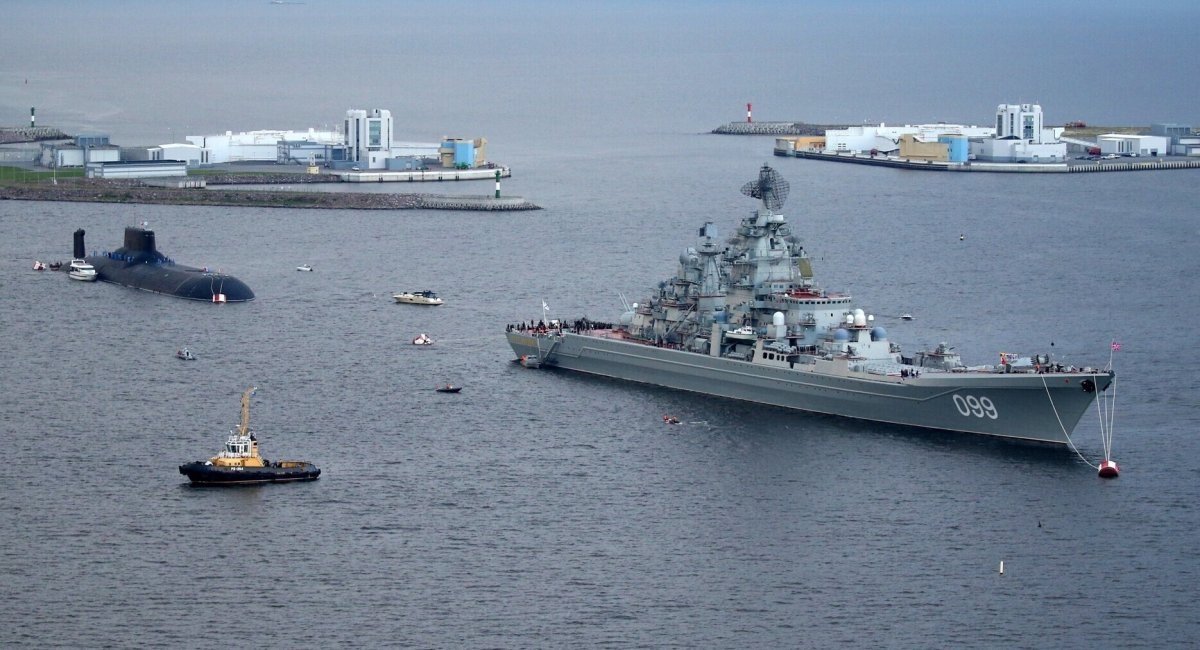Russia Bids Farewell to Soviet-Era Battlecruiser, Pyotr Veliky
The decision of the Russian Navy to decommission the battlecruiser "Pyotr Veliky" is in line with its strategic initiative to reduce the number of inherited "monster-size" warships from the Soviet era. These vessels pose operational challenges and are prohibitively expensive to maintain at sea.
(DEFENCE SECURITY ASIA) — Russia has reportedly abandoned its intention to modernize and upgrade its powerful nuclear-powered battlecruiser, “Pyotr Veliky,” opting instead to decommission the warship once hailed by Moscow as the world’s “most powerful” surface vessel.
The Kirov-class battlecruiser “Pyotr Veliky,” weighing 28,000 tons, is comparable in weight to Japan’s “mini aircraft carrier” vessels, JS Izumo and JS Kaga, currently undergoing modifications to serve as mini aircraft carriers.
With the retirement of the “Pyotr Veliky,” the Russian Navy will be left with only one Kirov-class battlecruiser, the “Admiral Nakhimov,” currently undergoing modernization and upgrades in the country’s shipyards.
The “Admiral Nakhimov,” initiated in 1999, is expected to return to the seas by 2024-2025.
Once “Admiral Nakhimov” is operational, the “Pyotr Veliky” will be decommissioned.

At a weight of 28,000 tons, both Kirov-class battlecruisers, “Pyotr Veliky” and “Admiral Nakhimov,” constitute the largest surface warships in the world.
In comparison, U.S. Arleigh Burke-class destroyers weigh over 7,000 tons, while Ticonderoga-class cruisers exceed 9,000 tons and China’s Type 055 destroyers weigh over 11,000 tons.
During the Soviet Union era, the communist government built four Kirov-class battlecruisers, with “Pyotr Veliky” being the latest commissioned in 1989, a year before “Admiral Nakhimov.”
Following the Soviet Union’s collapse, two Kirov-class battlecruisers were left inactive due to insufficient funding for operations, leaving “Pyotr Veliky” and “Admiral Nakhimov” as the only operational ships of that class.
In light of this recent decision, Russia will now have only one battlecruiser in its fleet.
This move aligns with Russia’s broader strategy of reducing the number of inherited “monster-size” warships from the Soviet era, which were not only operationally challenging but also expensive to maintain at sea.

Instead, the Russian Navy is shifting its focus to constructing warships such as frigates and corvettes.
With technological advancements, these vessels can carry various weapon systems, including hypersonic “Tsirkon” guided missiles and “Kalibr” cruise missiles capable of targeting enemy positions from thousands of kilometers away.
Furthermore, Russia is seen strengthening its submarine fleet, making it a “more formidable” platform for its adversaries.
The ongoing repairs and upgrades to the “Admiral Nakhimov” include the replacement of uranium in its nuclear reactor and the installation of new weapon systems, including cruise missiles.
It will be equipped with 176 Vertical Launch System (VLS) cells to launch guided missiles for both land and air targets.

Among the new weapon systems onboard the “Admiral Nakhimov” are hypersonic “Tsirkon” guided missiles, with military observers stating that Russia’s “most powerful” warship will be equipped with 60 of these hypersonic missiles.
In addition to Tsirkon, the warship will feature “Kalibr” cruise missiles, Fort-M air defense systems, Pantsir-M, as well as anti-submarine systems “Paket-NK” and “Otvet.” — DSA

DEFENCE SECURITY ASIA APPS
To advertise contact: haikalhamas73@gmail.com


Comments are closed.